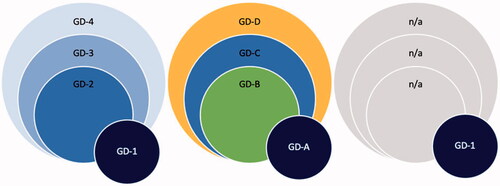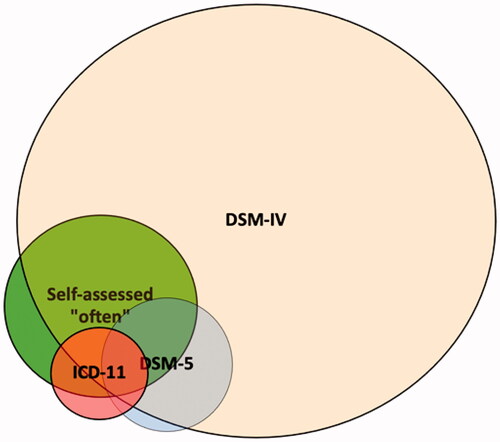Figures & data
Figure 1. Four example scenarios where GRHP screening instruments identify overlapping groups.
Note. On the left: an example scenario where four screening instruments identify four different sized groups and they all capture the same construct on different severity levels (e.g. GD-1: severe problems, GD-4: mild problems). Left middle: an example scenario where four screening instruments identify four different sized groups and they all capture different domains of the construct (e.g. GD-A: mental health problems, GD-B: physical health problems, GD-C: social health problems, GD-D: other problems). Right middle: an example scenario where four screening instruments identify four different sized groups of which one involves GRHPs (e.g. GD-1: mixed health problems, other identified groups not related health problems). On the right: an example perfect scenario where four screening instruments identify one and the same group. The examples are not exhaustive, and the identified groups need not overlap.

Figure 2. Three example scenarios where one screening instrument identifies a group with marginal overlap.

Table 1. Prevalence rates and their differences.
Table 2. Binomial probabilities for overlap when comparing participants in respective construct groups.
Table 3. Participants who failed the first control question but passed the second one (and were included).
Table 4 . All H3-related exploratory analyses.


